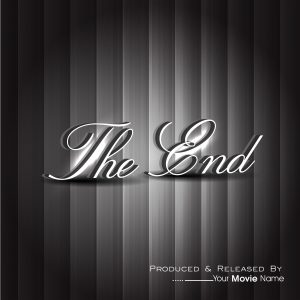Introducing film study…
The audio-visual medium seems to be replacing the written word for entertainment in the current younger generation, which is why I believe film study is important. What exactly is film study, what does it entail, and how does one go about studying a movie? Why should you consider movie study?
 Film study means studying what you see on the screen, but looking behind the screen, if you will. Things like camera angles make a difference, things you can’t see like lighting, and things you hear like music, also make a difference. All these things combine to make the effect of the movie.
Film study means studying what you see on the screen, but looking behind the screen, if you will. Things like camera angles make a difference, things you can’t see like lighting, and things you hear like music, also make a difference. All these things combine to make the effect of the movie.
Here are some examples of camera angles being important. (Both Notting Hill and Witness are more grown-up movies, but you can see the examples referenced from them to give you an idea of what I’m talking about.)
- Notting Hill (Hugh Grant, Julia Roberts): Within the first 5 minutes of the opening of the movie when his assistant leaves the store for coffee, the camera is focused on Hugh Grant’s face with the entrance door of his travel bookstore blurry in the background. The door opens, someone comes in, he looks up, looks down, frowns, and then looks up again. That frown tells that something important just happened.
- Witness (Harrison Ford, Kelly McGillis): When young Samuel is about to identify the guilty man in the police room, there is a lock of eyes between Samuel and Ford that transcends words, and no words are required in that part as he clearly points to identify the murderer.
- Witness: At the very end of Witness, John Book (Ford) is standing on the porch and McGillis is at the door to say goodbye. The camera looks at him as though she is looking at him, but his face only half fills the shot. In the background is the winding road which is going to take him away from her back to his own life.
While not about camera angles, the following two examples are about using the screen to create a story or an illusion.
- Tarzan (any with Johnny Weismuller): There are many times you see someone being chased by a wild animal. At least that is what you THINK you see. In fact, you see actors in front of a screen that is showing the wild animal running.
- Up: In the beginning of this animated movie is a wonderful display of time passing in the form of photographs in an album.
When I see these types of things, I often stop the movie briefly, go back and show the children again so they can learn to see that what they see may not actually be what is there to be seen. By stopping movies at various points to show them different things, it gives them a different set of eyes through which to observe the films, documentaries, animation and other forms they enjoy with an eye to doing so themselves. We are in the beginning of our own study of using videos and cameras and are excited about what might come of it.
 Let’s look at music and its use in movies. Have you ever turned the sound off on a Hitchcock movie? What about a different thriller, or the end of a movie when the man runs towards the woman? Any of those would not be the same without the music. Imagine The Lone Ranger without the William Tell Overture. Music takes you somewhere, makes you feel something, gives characters a theme tune, and the placement of well-chosen music can be what makes a movie gripping or tugs at your heart strings.
Let’s look at music and its use in movies. Have you ever turned the sound off on a Hitchcock movie? What about a different thriller, or the end of a movie when the man runs towards the woman? Any of those would not be the same without the music. Imagine The Lone Ranger without the William Tell Overture. Music takes you somewhere, makes you feel something, gives characters a theme tune, and the placement of well-chosen music can be what makes a movie gripping or tugs at your heart strings.
Why should you consider movie study? Movies can be very entertaining. They can also take you somewhere, teach you something, contain hidden messages. By teaching your child to watch it through eyes with their brain engaged, they learn to see. By studying good examples of all genres, they can be exposed to a variety of ways a camera can be used, including dialog and scenes that broaden their vision for communication even more greatly than is the case with novels, essays or biographies. In today’s world where video is increasingly becoming the most common form of imparting information and entertainment, it is important that your child gain an understanding of how it can be used, and used well.
 Genres that you might consider exposing your child to should include everything from silent movies, black and white, and musicals to animation, action, even super heroes. Black and white, which for so long was the primary means of visual narrative, evoked a certain mood that color doesn’t capture. Color, particularly the earlier ones, were extraordinary displays as film-makers sought to explore the richness of this new palette.
Genres that you might consider exposing your child to should include everything from silent movies, black and white, and musicals to animation, action, even super heroes. Black and white, which for so long was the primary means of visual narrative, evoked a certain mood that color doesn’t capture. Color, particularly the earlier ones, were extraordinary displays as film-makers sought to explore the richness of this new palette.
Something else to add into your film study is a movie report. Sometimes, especially when you really discussed a movie, it might be worth your while having your child write a movie report. This can look however you want it to, but can contain some of the headings or subjects you focused on in your discussion of it.
Everyone enjoys a good movie. Making use of that for your homeschooling just makes sense, as learning opportunities are everywhere!





